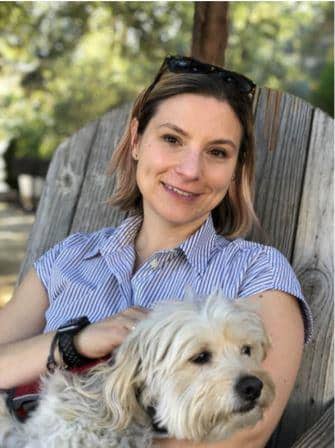Cording: the Mystery Unraveled!

Breast cancer treatment seems to be full of unexpected “surprises,” and one high on that list is “cording” (or Axillary Webbing Syndrome, if you want to be fancy). The symptoms are best described as a really specific sensation of pulling, the kind you can pinpoint and trace with your finger. In fact, if you did try to trace it with your finger you may actually feel it. It’s as if there’s a guitar string running just under your skin (hence it’s common name of “cords.”). It can feel like something is tearing, or even like you’re pulling on a nerve. It does NOT feel tight in a familiar way, like say you have a tight calf muscle and then you stretch it and it feels better. It’s different. It can be severe enough to limit your movement, most often of your shoulder but can also impact elbow straightening and wrist/hand function.
Cording usually starts in your armpit and travels down into your arm, but can also start at your port (especially if it’s in your upper arm) or underneath expanders or implants.
What is it?
This is an excellent and frustrating question. There is no general consensus. As a physical therapist who specializes in treating women with breast cancer, and as a Certified Lymphedema Therapist (CLT), I’ve done lots of research on this from different continuing education courses to plain old googling the interwebs. Here’s what I’ve learned:
There seem to be 3 main theories of what the cord is actually made of.
1. Scar tissue that has run amok.
2. Lymphatic vessels that have hardened.
3. In the arm, the major arteries, veins and nerves run together in a bundle.
Some believe the connective tissue that surrounds the bundle is what becomes fibrotic (medical word that basically means “hard.”).
Anecdotally, I can tell you from working with patients, that all three make sense to me. Sometimes there is a really thick cord that starts in the armpit and seems to be scar tissue left over from lymph node dissection, or expander placement. Often times plastic surgeons tell their patients they can “clean that up” during the expander exchange surgery for implants. Other times the cording is more diffuse and webby, just like the lymphatic vessels, or can follow the exact anatomic pathway of a major artery/vein/nerve bundle.
How do we get rid of it?
The good news is, this is self-limiting, meaning it will eventually go away on its own. A physical therapist that specializes in treating breast cancer can definitely help and make the process easier. On your own- keep using and stretching your arm as best you can, and gently massage over the cords as if you were trying to rub lotion into them. You may hear/feel a “pop” sensation, indicating one of the cords has snapped. This might feel like being on the wrong end of a zinging rubber band, but typically results in less pain with better arm motion after. Breaking the cords in this manner is not necessarily our goal- again, as we don’t know 100% what the cords are made of, and better not to just snap random things in the body- but if it happens naturally, that’s fine, no need to worry. This Over The Door Pulley is an easy way to stretch your arms at home.
How long until it goes away?
Cording can last several months, and seems to take a few steps forward, then backward, but eventually will stop completely….until it randomly show up again for a few days and then seems to be gone for good. Typically it’s completely gone in 4 to 6 months, but not uncommon to pop up here and there even two years after treatment.
To learn more about Hashtag Our Tribe, please visit www.hashtagourtribe.com
